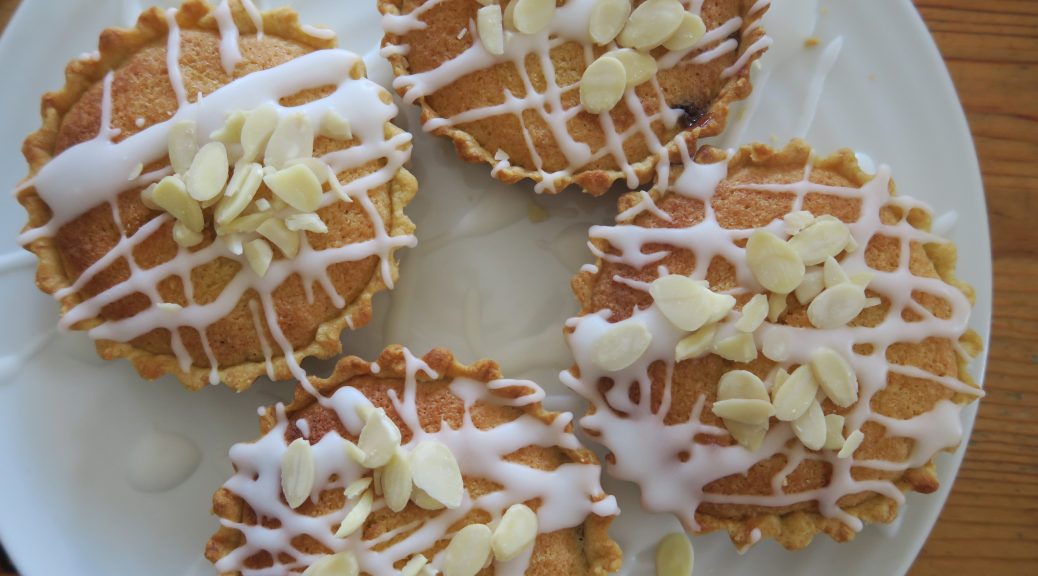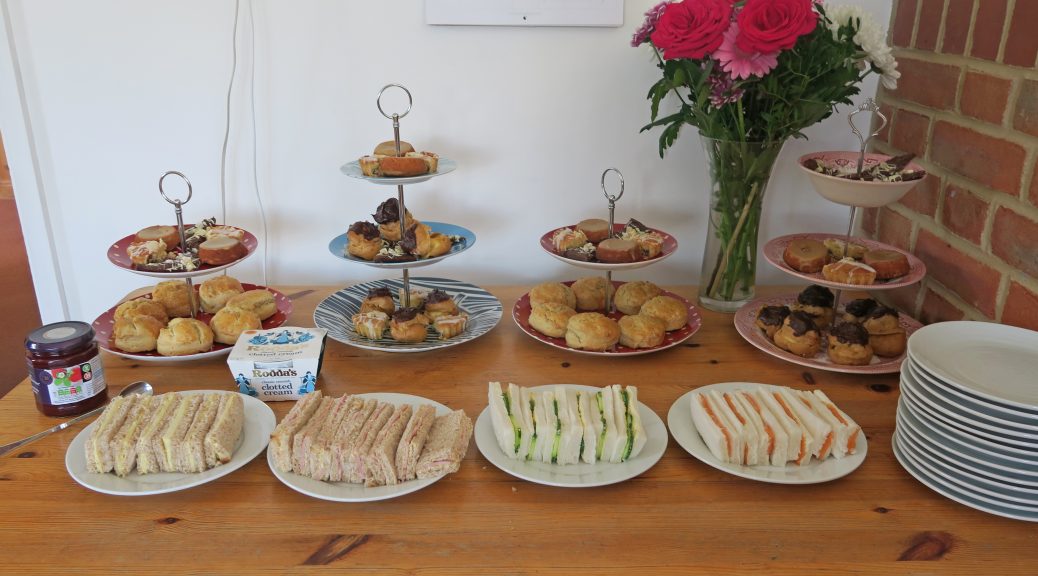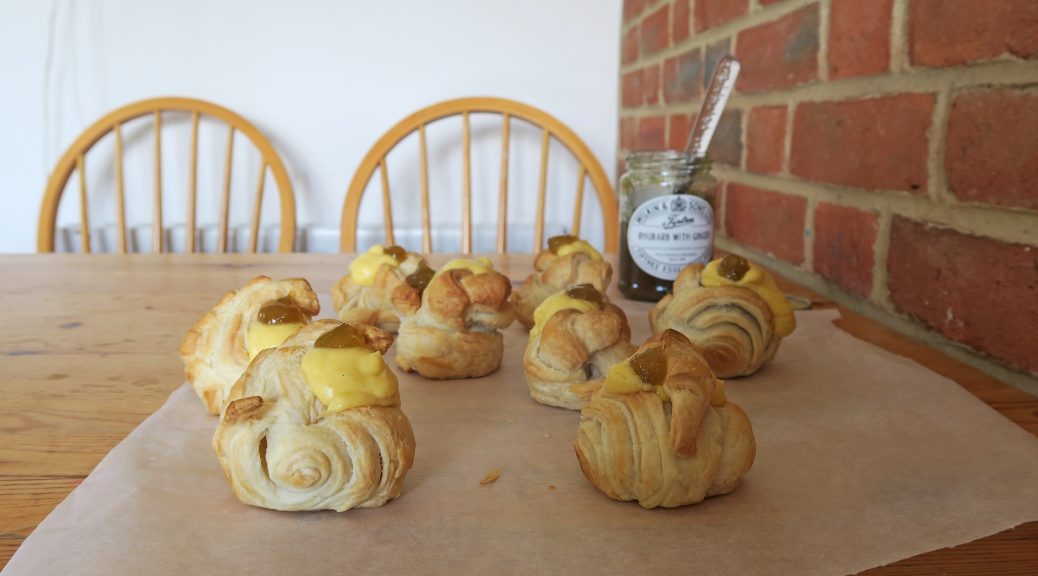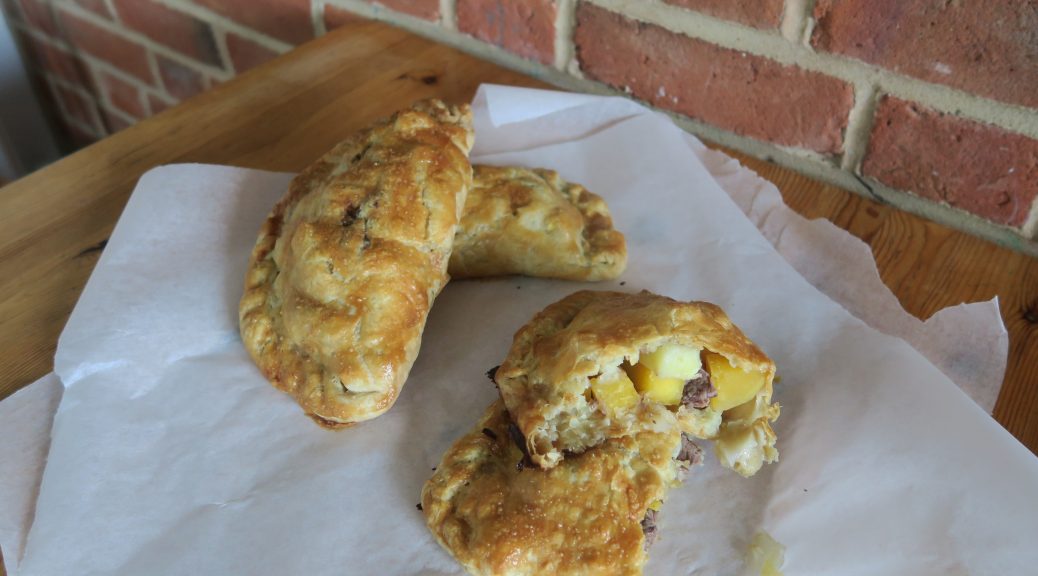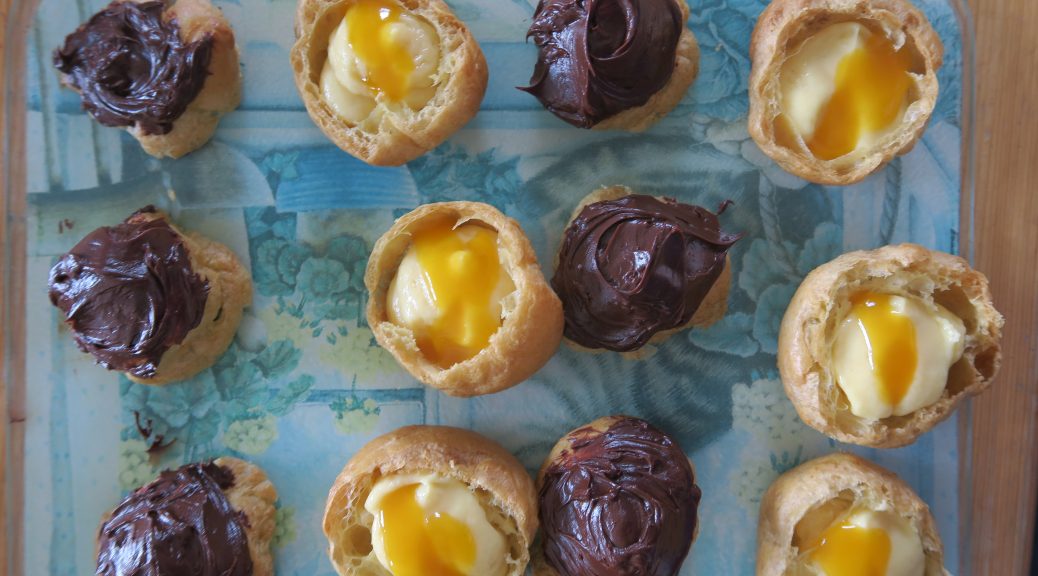
Passion Fruit and Chocolate Profiteroles
Every afternoon tea stack needs some choux pastry, and who doesn’t love profiteroles? These ones are stuffed with a passion fruit creme patisserie which gives a great tang to marry with the rich chocolate ganache on top. If you’re not a fan of passion fruit these also work really well with orange zest or even just as plain vanilla creme pat. If you’re not keen on making creme pat you could even go super traditional and just fill the profiteroles with whipped cream!

Recipe
Makes 25
Time: 2 hours
Ingredients
For the choux pastry
- 110g Unsalted butter
- 120g Plain flour
- 3 Medium eggs
For the filling
- 250ml Whole milk
- 1 tbsp Vanilla bean paste
- 50g Caster sugar
- 3 Egg yolks
- 10g Cocoa powder
- 10g Cornflour
- 25ml Passion fruit curd (or coulis – preferably with no seeds)
To decorate
- 100ml Double cream
- 100g Dark chocolate
Method
- Begin by making the choux pastry. Put the butter and 450ml water into a large saucepan. Bring to the boil and wait until the butter has melted.
- Tip in the flour and mix really quickly with a wooden spoon until the mixture has formed a ball and is lump-free. Tip the dough into a bowl and spread it out as much as possible to help it cool down. Leave until cool (about half an hour).
- Meanwhile pre-heat the oven to 180˚C. Then line 2 baking trays with baking paper. Draw 10-15 circles, about 4cm in diameter, with a pencil on each baking sheet (it can be useful to use a lid or cookie cutter as a stencil to help!) Then turn the paper over so that the lines are on the other side.
- Now add the eggs to the dough, one by one, beating well in between each addition. You might not need all the eggs so between each addition test the consistency. You want the mixture to be thick and to hold it’s shape but to be pourable, if you pick up a bit of the pastry with a spatula and then shake it once you should get a ‘V’ shape of dough hanging off the end of the spatula.
- Transfer the pastry to a piping bag with a 1cm round nozzle. Pipe blobs of pastry onto your lined baking trays, using the circles you drew earlier as a guide. Then dip your finger in some water and dab down on any peaks or mis-shaped bits of the mounds.
- Bake the profteroles in the oven for 30-40 minutes until golden brown and risen. Then take the profiteroles out of the oven, quickly prick each one in the side with a knife and then put them back in the oven for 5-10 minutes to dry out even more (this will stop the profiteroles from collapsing once out of the oven). Then leave the profiteroles to cool completely on wire racks.
- Now make the crème patisserie filling. Put the milk and vanilla into a saucepan and bring to the boil.
- In another bowel mix the sugar, egg yolks and two flours until fully combined. Once the milk is heated, remove the pan from the heat and gently pour the milk into the egg mixture, whisking constantly.
- Once combined pour the mixture back into the pan and put the pan back over a heat. Whisk on a medium heat until the mixture boils and thickens.
- Take the mixture off the heat and stir in half the passionfruit curd. Pour the custard into a jug and cover with cling-film to prevent a skin from forming. Set aside for later.
- Now make the ganache. Chop the chocolate up finely and then put it into a bowl.
- Pour the cream into a small saucepan and bring just up to the boil. Then pour the hot cream over the chopped chocolate and whisk until the chocolate has melted and the mixture is smooth.
- When the profiterole shells have cooled down slice one in half with a sharp knife and place the ‘tops’ next to the ‘bottoms’.
- Pipe a blob of the creme patisserie into the base of each of the bottom shells. Then spoon a little of the passionfruit curd over the top of the creme pat.
- Next take one of the top profiterole halves and dip it into the ganache. Run your thumb along the side to stop drips and then repeat with the rest of the tops.
- Finally put the tops of the profiteroles onto the bottoms and serve!

Thanks for reading!
Emma x
